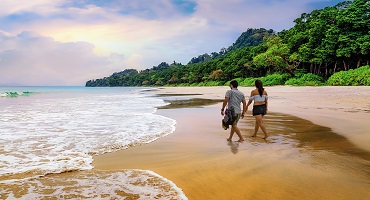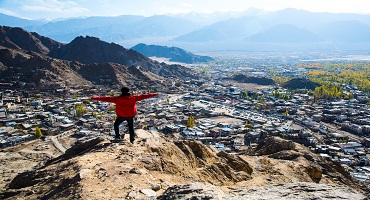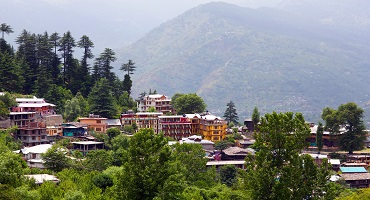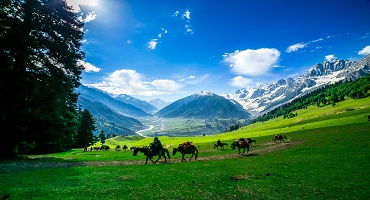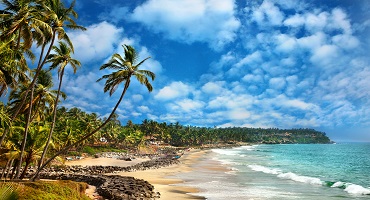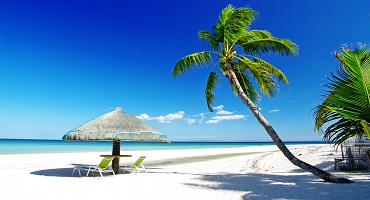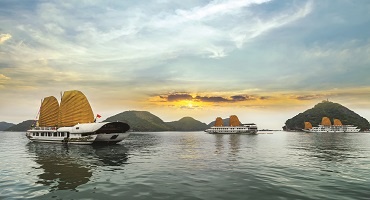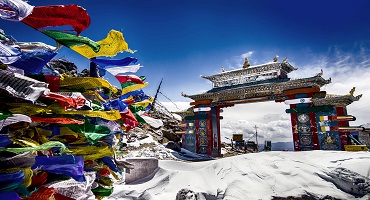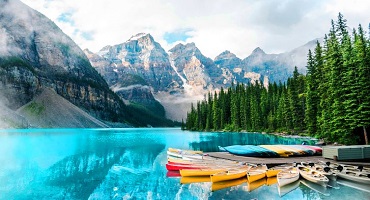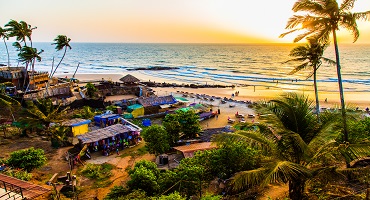Traditional folk music and dance, a pint of Guinness, the flushing meadows, various natural wonders, continuous rains, Neolithic sites and numerous heritage sites await you at the snake-island nation of Ireland. If you love travelling to offbeat places that are true to their origin and nature, Ireland is the perfect location for you. Road trips through meadows with the ocean on one side, stays at palatial castles, quality time along freshwater lakes, and drinks at a local restaurant are just a few of the many things you can do in the country. Going to a tiny nation with less than 5 million people in it is the most appealing feature for travellers seeking peace through travelling. The tranquillity that comes with the idyllic settings of this country is truly unmatched.
One thing that stands out the most about Ireland is its climate, as it can rain any day here. Therefore, it goes without saying that you need to carry an umbrella with you all the time. Of course, not to imply that the days there are gloomy and dull! There is often bright sunshine within minutes of the rain stopping. In fact, you might even experience heavy rains with the sun shining bright. Such weather conditions in Ireland are due to the fact that it’s located in the Atlantic Ocean and the winds of the Gulf Stream hit it throughout the year. This unique position results in temperate weather conditions without massive fluctuations. Therefore, you can visit the country almost any time of the year!
Dublin is the capital city of Ireland and is the most visited city in the country. One can spot medieval architecture in the form of the different castles and houses retaining their look from centuries ago. Such pure and unspoilt beauty even in the cities is what makes Ireland so appealing. Galway, Cork and Killarney are the other cities that provide similar experiences.
Known as The Emerald Isle in the tourist circuit for its endlessly lush meadows spread across the country, Ireland is certainly a stunning country to visit. Ireland is also home to some natural wonders, with the Cliffs of Moher and the Giant’s Causeway being hot favourites amongst tourists. Wicklow Mountains and the Connemara Lakes are two offbeat locations in the country where you will find only a few tourists, even during the peak season of summer.
When pondering over the best time to visit Ireland, keep in mind that everywhere you go, the rain and sun will follow you, making the weather conditions quite unpredictable. Thus, do not base your travel on the weather. Instead, base it on the festivals and activities you can be a part of!
Peak Season: Mid-June to August
Off Season: Mid-October through March
Shoulder Season: April through mid-June and September through mid-October
Spring, summer and autumn are all great seasons to visit the country, but the summer stands out the most because of the favourable conditions during this time of the year. The winter in the country too has its own charm, with snowfall on a few mountains. The following is a detailed analysis of how the seasons fare in the country with respect to tourists’ interests.
| Travel Seasons |
Min/ Max Temperature |
Weather |
| Spring |
8-12°C |
Cold and bright |
| Summer |
16-22°C |
Pleasant and Partly rainy |
| Autumn |
14-18°C |
Gloomy and rainy |
| Winter |
4-10°C |
Cold and heavily rainy |
Spring In Ireland (March to May):
Temperature: The temperature during spring in Ireland fluctuates between 8°C and 12°C.
Weather: Surprisingly, spring in Ireland is the season with the least amount of rain in the country. However, it is quite chilly as well, with the temperature ranging from 8°C to 12°C across large portions of the country. It is quite breezy during this season with continuous winds flowing on both coasts.
Significant Events: One of the biggest festivals in the country, St. Patrick’s Day, falls in the spring season. What once was a single day celebration has now become a week-long festival with various parades taking place across the country. However, the major celebrations are centred around the capital city, Dublin. A sea of green can be seen throughout the streets with people celebrating in the form of music and dance while wearing their national colours.
Wexford Food & Wine Festival, Clifden Traditional Music Festival, and the Dingle International Film Festival are some of the other popular festivals that you can attend during the spring in Ireland.
Why you should visit now: The island nation slowly starts bidding adieu to the long winter and rains in the month of March. By April, you can spend your time outdoors and visit the popular tourist places without the weather hampering your travels. Since it is part of the shoulder season, you can get budget-friendly accommodation anywhere in the country. If you are in for a long tour, you can practically see nature changing from dull to colourful thanks to all the flowers that end up blooming in the spring.
Things to know before the visit: In March, it can get quite cold during the night so do carry your woollens accordingly. The months of April and May have long days with the sun not setting until 9:30 pm most days, so there is enough time for you to explore a lot of things in a single day itself!
Tip: Do not forget your umbrella even though this season experiences the least amount of precipitation in the year!
Summer In Ireland (June to August):
Temperature: The temperature during summer ranges between 16°C and 22°C.
Weather: Summer in Ireland is the best time for you to visit the country because of the beautiful sunny days. Yes, it rains almost every other day in July and August but the immediate sunlight that follows it makes the season even more special as you’ll always be spotting rainbows! The temperature stays between 16°C and 22°C.
Significant Events: Westport Folk and Bluegrass Festival and the Cork Midsummer Festival are the two biggest festivals in the month of June, with both focussing on cultural activities like dance, music, theatre, jam sessions, fusions and so on.
The Galway International Arts Festival and the Galway Races Summer Festival are the best festivals in July, with the former showcasing the best talent from around the world and the latter being a horse racing event with people enjoying music and dance events as well.
Why you should visit now: The days are unusually long in June with the sun setting only after 10 pm. It sets around 8:30 pm in July and August. Such conditions give you enough time to explore the cities and countryside during the day itself. Moreover, the country hosts themost number of festivals and carnivals during this time of the year.
Things to know before the trip: Since it is the peak season in Ireland, you must definitely book your hotel rooms and flight tickets well in advance so that you get the best rooms for the most convenient prices. Moreover, since it is also the holiday season for the locals, the streets of major cities would be filled with people.
Tips: If you are travelling in July or August, you must definitely carry your umbrella and waterproof clothes with you all the time as it can rain anytime. Also, you may want to carry a layer or two of woollens for the nights, especially during the latter half of August.
Autumn In Ireland (September to November):
Temperature: The temperature you get to experience in the autumn in Ireland is somewhere between 14°C and 18°C.
Weather: Autumn in Ireland takes you closer to the winter season with daylight decreasing rapidly over the three months. November sees less than 8 hours of daylight. However, there is not much of a drop in the temperature as the lowest temperature hardly drops below 14°C. October sees a lot less rain than the other two months in autumn.
Significant events: The Oyster Festival and the Dublin Fringe Festival are the most popular festivals in this season with the latter focussing on giving a stage to new talent from the country in the field of music, dance, theatre, visual art and so on.
As Ireland is the birthplace of Halloween, this definitely is a festival that you would not want to miss. It is celebrated in a huge way across the country. Dublin even hosts a parade with lots of emphasis given on Celtic culture.
Why you should visit now: This season is another shoulder season with most tourists going back. September is still quite warm and is one of the ideal times to travel in the country. Moreover, this season gives you an opportunity to get budget-friendly rooms. Furthermore, all landscapes are incredibly charming at this time with lovely brown and orange leaves all over.
Things to know before the visit: It can get quite chilly and rainy in the latter half of the season and therefore you need to carry your clothes accordingly. It is the perfect time for a hike through the meadows to witness the leaves turning red and yellow.
Tips: Make sure you are fit enough to indulge in hikes and treks as this is the best season for such outdoor activities. Carry your raincoat throughout the tour as it can rain any time of the day even without any evident signs in the sky.
Winter In Ireland (December to February):
Temperature: The temperature stays in the range of 4°C and 10°C in the winter season.
Weather: The winter months in Ireland are the rainiest of all. The cities are normally quite wet and rainy, and only the mountains at high altitudes receive snowfall in the month of January and February. The temperature does not go under the freezing point and stays in the bracket of 4°C and 10°C.
Significant events: Enjoy the Winter Solstice with the celebrations at the Neolithic site in County Meath, which is 5000 years old. However, to attend the event, you have to go through a lottery to get the seats.
The biggest festival in the winter season is naturally Christmas and St. Stephen’s Day. This is the perfect time for you to enjoy the local culture and food at the restaurants in the cities.
The Dublin New Year Festival is another event that you would not want to miss. All the locals assemble in the city to enjoy the countdown concert that starts from 8 pm on Dec 31st.
Why you should visit now: It is one of the best times to visit the country if you want to stay in heritage castles. The cost per night drops as low as € 200 a night.
Things to know before the visit: It rains and rains. All three months of winter see continuous showers. Therefore, you must carry your umbrella and raincoat all the time. Another thing you need to know is that there might be days where the major tourist places are closed.
Tips: Keep a tab on when the tourist spots, museums and castles are closed during this time so that you can travel accordingly.
Can’t wait to get to this beautiful country? Check out Thomas Cook’s travel packages and plan your trip today!
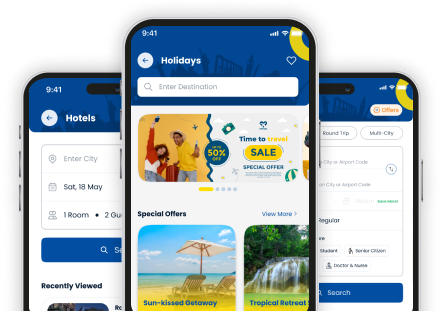





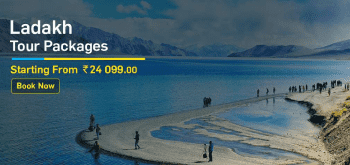


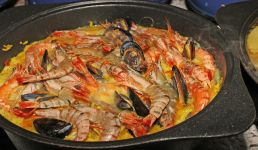
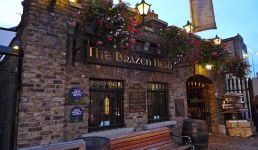





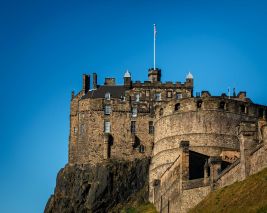

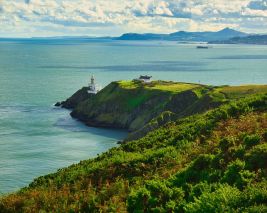


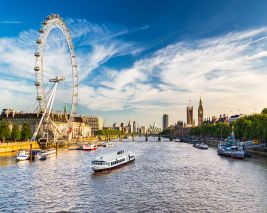
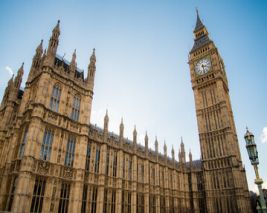
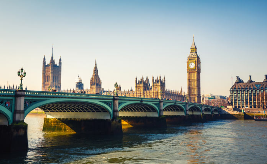
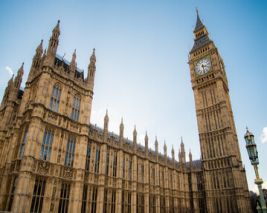
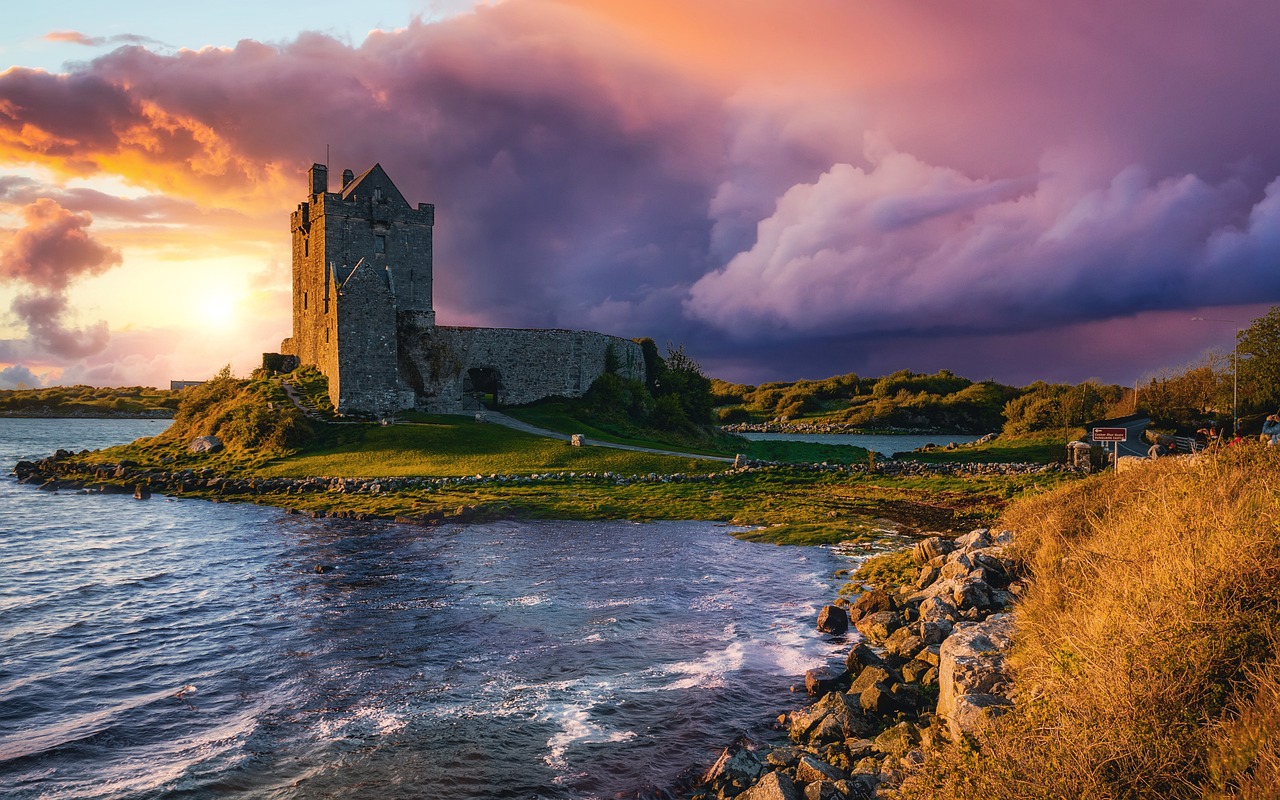
.jpg)
